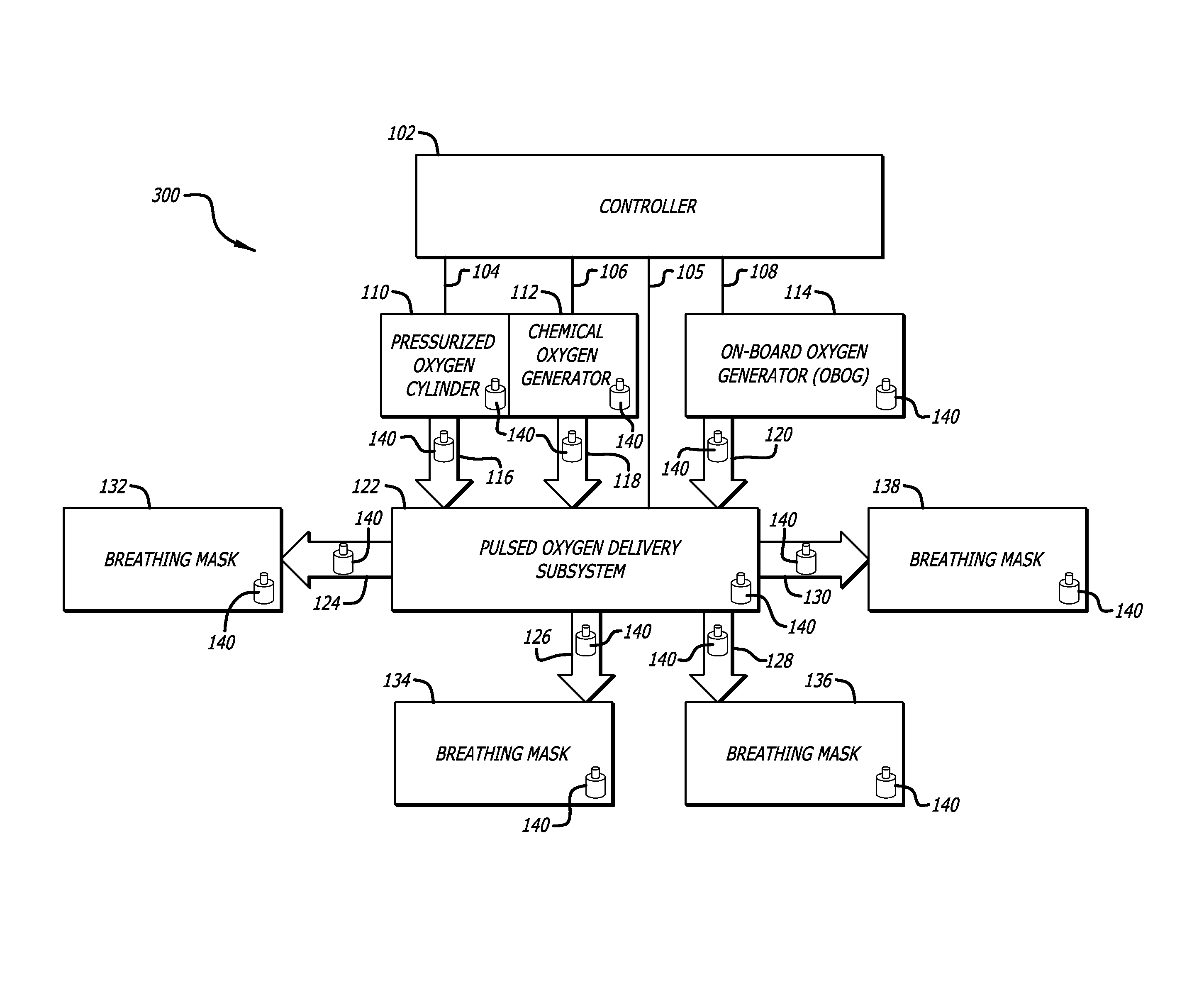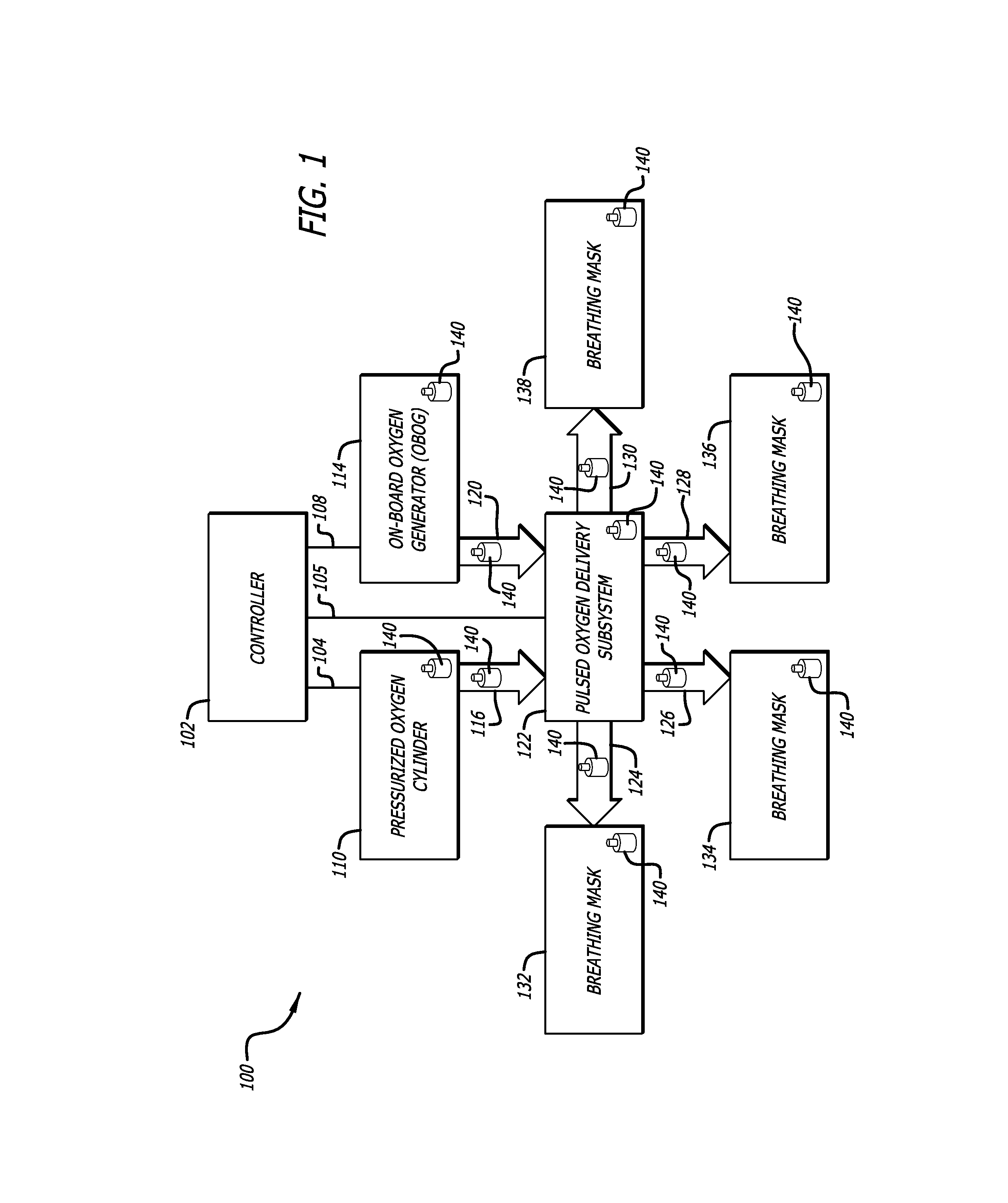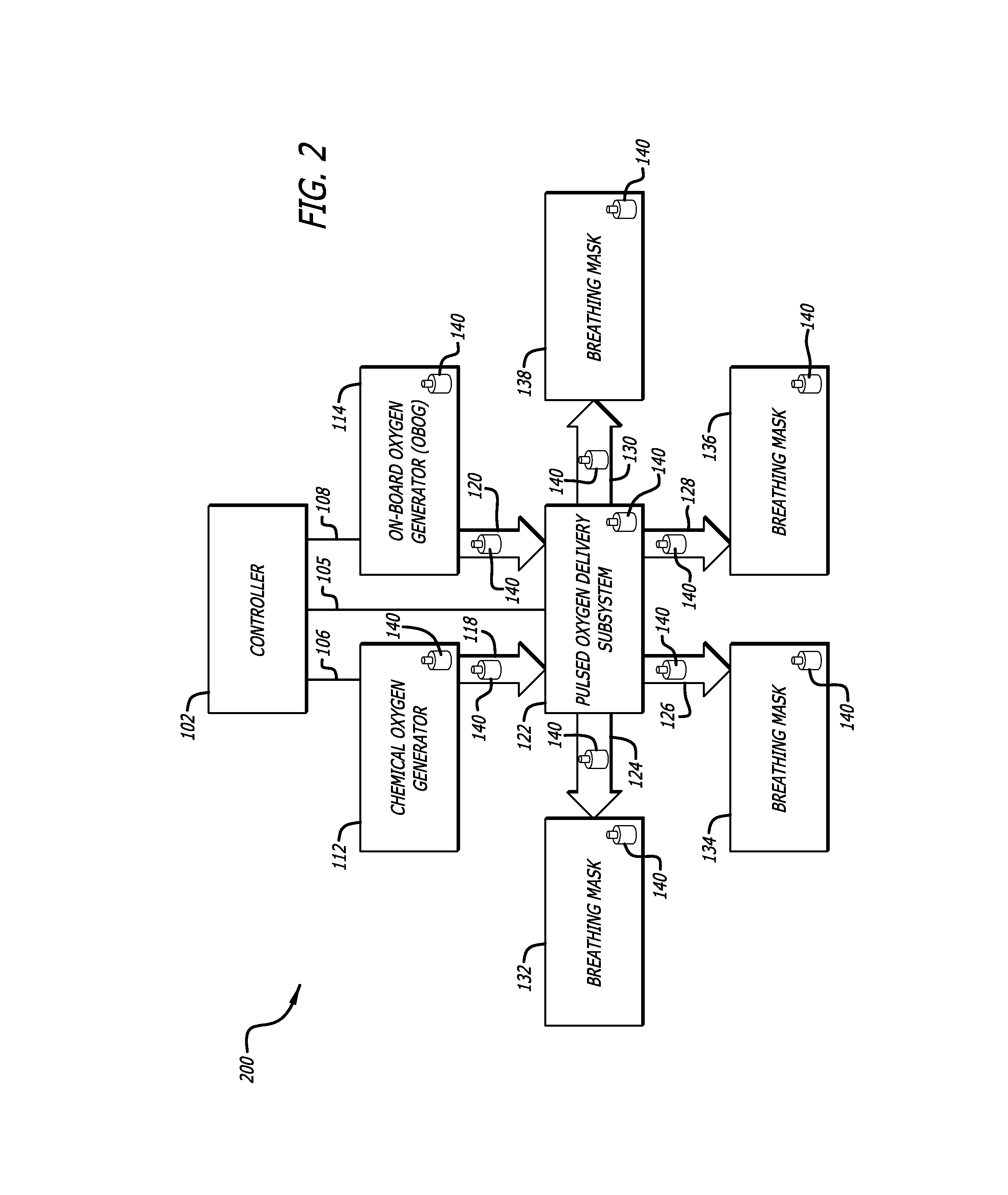On-board generation of oxygen for aircraft passengers
a technology for aircraft passengers and oxygen on board, applied in the field of system and method, can solve the problems of increasing fuel costs, adding significant weight, and contributing to the hazard potential of the oxygen supply system
- Summary
- Abstract
- Description
- Claims
- Application Information
AI Technical Summary
Benefits of technology
Problems solved by technology
Method used
Image
Examples
Embodiment Construction
[0041]The present invention provides a system and method for generating, supplying and maintaining adequate reserves of oxygen. One preferred application for the present invention is to provide oxygen for passengers and flight crew on-board an aircraft including at high altitudes above 30,000 feet, during descent, at holding altitudes at or below 30,000 feet, on flight paths over variable terrain, and on flights of any duration. The present invention offers several advantages for providing oxygen to passengers and crew on both business jets and commercial aircrafts.
[0042]Maintaining adequate reserves of oxygen may be accomplished by storing excess oxygen generated for future use through refilling emergency reserves. Conservation of available oxygen by more closely matching oxygen supplied from the system to oxygen demand by passengers and crew also assists with maintenance of adequate reserves.
[0043]Accordingly, as is shown in FIGS. 1 through 3, which are provided for purposes of il...
PUM
 Login to View More
Login to View More Abstract
Description
Claims
Application Information
 Login to View More
Login to View More - R&D
- Intellectual Property
- Life Sciences
- Materials
- Tech Scout
- Unparalleled Data Quality
- Higher Quality Content
- 60% Fewer Hallucinations
Browse by: Latest US Patents, China's latest patents, Technical Efficacy Thesaurus, Application Domain, Technology Topic, Popular Technical Reports.
© 2025 PatSnap. All rights reserved.Legal|Privacy policy|Modern Slavery Act Transparency Statement|Sitemap|About US| Contact US: help@patsnap.com



